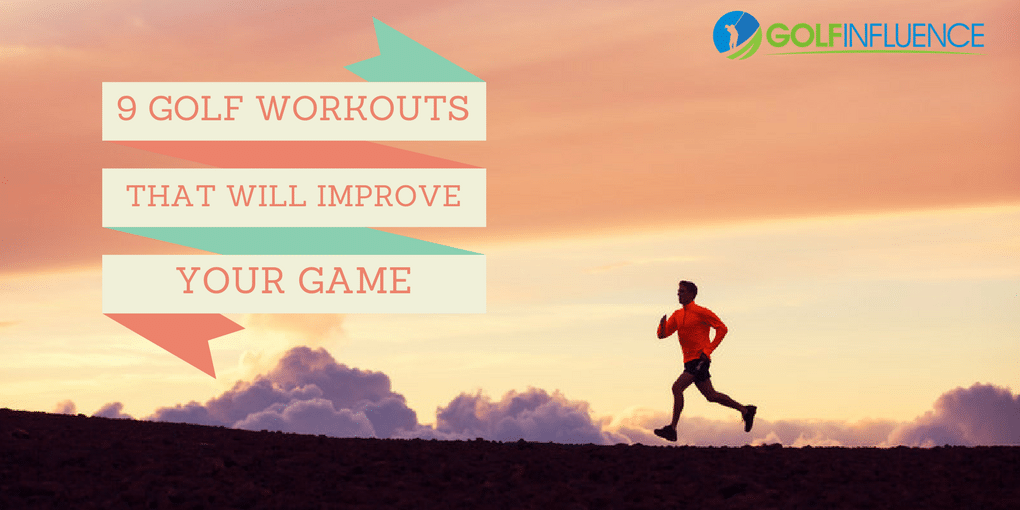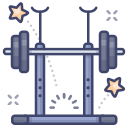Golf Workouts to Improve Your Game
Golfers often seek to improve their game by buying new equipment, playing more golf, or taking lessons.
Although these are some possible solutions, there are many times our golf game is not a reflection of our skill as a golfer or the equipment we use.
It is actually a reflection of our body’s physical limitations.
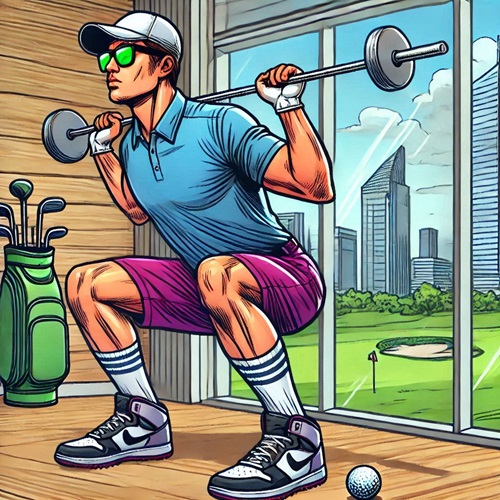
How can someone expect to drive the ball further or have a consistent swing when his or her body lacks the proper foundation to swing the club and play the game?
That is purely impossible.
When golfers think about improving their game, most likely the first thing that comes to mind is to play more golf, take more golf lessons, or buy new pieces of equipment.
However, we often neglect one other important aspect of the game: your physical abilities.
Although it may not seem like it, especially for those who never played, the game of golf is very physically demanding.
For example, we all know how swing speed is extremely important to lower your handicap, and although technique will also play a huge part, your physical limitations will be a bigger factor.
When you are hitting a wall in your performance, you should always look at the two different aspects: technique and physique.
When performance is not right, it’s usually because of…
Technique

This refers to your golf skills – how much you know about the game and the experience you have with it.
Physique
This refers to your body health – how much you exercise, how you eat, and how you keep your body in good shape.
Both are equally important in improving your game. It’s true that accuracy and on-point hits are bigger factors in determining distance compared to how hard you are hitting the ball.
However, the difference will show itself when you are facing a player with a similar accuracy but better strength.
Even for those who are not playing competitively, physical workouts will still have its benefit. Warming up regularly, as well as doing some strength and flexibility training in between your golf games, can dramatically reduce the risks of injuries.
Don’t forget another obvious benefit: you will be healthier than ever.
Bonus!
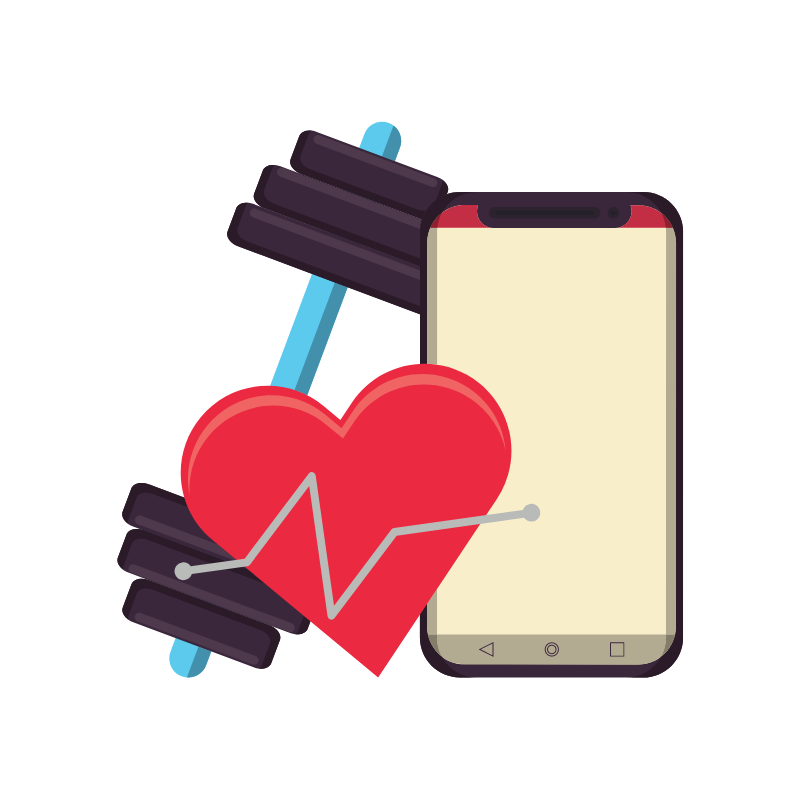
Download a free resource that summarizes everything you need to know about the proper workout routines to help you improve your golf game.
CHAPTER 1
Questions & Answers
This article will be a little different than usual, as we will discuss the physical aspect of golf.
We will have an in-depth discussion of the importance of warming up and cooling down before and after your golf game, both for injury prevention and enhancing your performance.
The idea is to provide you with a workout routine that you can apply before every game.
Let us first begin the discussion by answering several questions that are most commonly asked in a discussion about the physical aspect of golf.
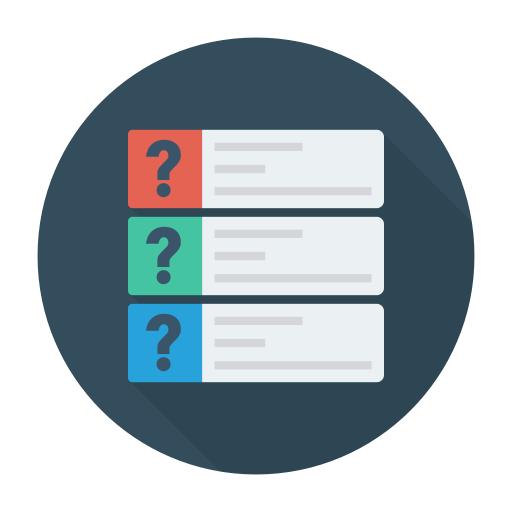
Why do I need to warm up before playing golf?
The game of golf in many ways is very similar to sprinting. They both are anaerobic activities that involve a very explosive movement in a relatively short amount of time.
Yet, we will always see sprinters warming up before they compete or even train, but it is not as common in golf. Obviously, warming up will significantly eliminate the risks of injuries, as with any sport.
In golf, the risks for injuries are very prominent, because the movement throughout the activity is focused.
The explosive movement of your back, neck, shoulders, and arms is very injury-prominent, and preventing it is very important.
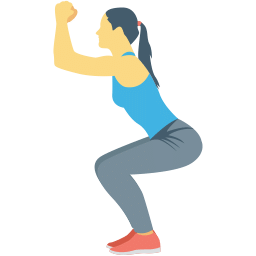
If the thought of getting an injury doesn’t bother you, the other one might: warming up for just 5 minutes can significantly enhance your driving distance by up to 45 yards!
And it’s not only a gain in distance. Proper warming up can dramatically enhance your performance on all fronts.
Tiger Woods has shown the world how his fit physique and ripped abs can dramatically improve his performance, and he was rarely injured during his peak.
That is a result of an effective workout routine. In more recent years, Rory McIlroy has proven that the same approach definitely works.
If you are looking to improve your game, or you have just hit a performance wall recently, maybe getting in better shape will be the answer.
How can golf workouts help my game?
MORE FLEXIBILITY
Proper golf workouts will allow better muscle mobility, which in turn, will allow better movements as you make your swing.
Hip and spine rotational flexibility, easier arm stretches, and greater flexibility in the legs are the keys to better and faster swing.
HEALTHIER BODY
Remember that for any sport, health is the ultimate goal. A healthier body will also indirectly affect your performance and will allow you to have more fun on the golf course.
GAME DISCIPLINE
Doing proper golf workouts regularly won’t only improve your physical state but also your mental strength.
Some might argue that mental discipline is just as important, if not more, than physical strength and technique in golf, and challenging yourself to a regular workout regime will surely show its benefits.
How long and how often should I exercise?
The ideal workout regime for a golfer is 3 to 4 times a week. 30 minutes to 1 hour spent per workout is more than enough.
During the off-season, if you are a competitive golfer, you can increase the intensity of the workout.
It can serve not only to maintain your current condition but also to improve your strength and flexibility for the upcoming season.
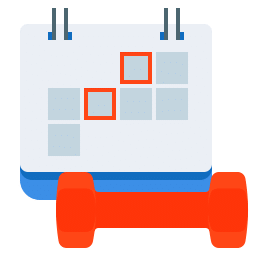
Ideally, your golf workout regime should also be balanced with swing and accuracy training.
- 30 minutes Min workout time
- 60 minutes Max workout time
- 3-4 times a week
Here is an example: a golf workout every Monday and Wednesday and a light workout on Fridays, with Tuesday and Thursday being resting days.
This way, you can hit the golf course or driving range on Saturdays or Sundays without any problem.
What are specific body areas I should focus on?
Based on what we have discussed so far, we have established the fact that your emphasis for your golf workout regime should be preventing injury and improving your swing.
Before we can answer this question, let’s first see the common problems associated with swing, as pointed out by the Titleist Performance Institute:
Alteration of Posture

TPI claimed that 64.3% of their respondents altered the body’s original posture before and during the swing.
The blame is often given to the player’s own habit, but in reality, lack of muscle flexibility and strength to support the posture can be the actual culprit.
Flat Shoulder Plane

45.2% of sample golfers also suffer from this problem.
Here, the shoulders cover more horizontal movement than the spine. The cause is obvious, for those lacking strength training, back and shoulder muscles are often the weakest.
Even more, the strength between both muscle groups can be significantly imbalanced.
Early Extension
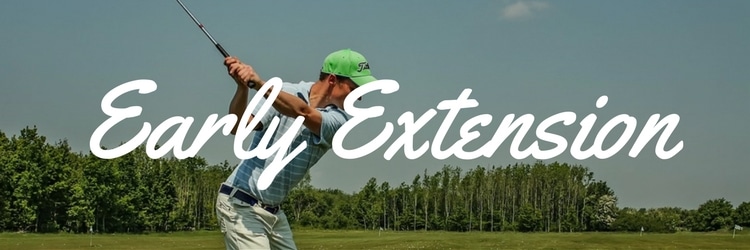
A whopping 64.3% belongs to this category. Here, your hip and spine extend or straighten too early. Again, back muscles are the culprit.
Early Release

55.9% of respondents suffer from the premature release of the wrist grip during the impact. Strength training of the arms and wrists will tremendously help with this problem.
Over The Top Motion

43.5% of players are making this mistake. Here, the club is thrown too wide, outside of the intended golf swing trajectory. Thus, the club head approaches the ball from the outside to the inside.
The culprit? Yes, most probably just habit. But have you ever thought that it is simply because your arms can’t support the club weight?
With those problems in mind, here are some physical causes that most probably will relate to the problem.
- Lack of core strength and stability
- Imbalance between upper and lower body strength
- Inadequate flexibility in the hip and spine
- Not enough strength in your legs and thighs to support your swing
- Overall lack of abdominal strength
- Lack of arms and wrist strength and flexibility
- Bad overall posture
With that in mind, the golf workout should attempt to fix that mistake by focusing the workout on your arms, wrists, hip, back, legs, thighs, abdominal, and core muscles.
Do I need to be in good shape to complete a golf workout?
Definitely not. After all, the goal of the golf workout itself is to improve your shape. You can start with any condition at all and adjust your regime according to your current strength level.
You can use a basic assessment test to determine your current condition, such as:
- Pelvic tilt and rotation test
- Overhead deep squat test
- Trunk rotation test
- Toe touch test
- Wrist extension
You can check out the full list of example assessments by Titleist Performance Institute here.
After you’ve understood your current level, you can determine the length and intensity of your workout regime. You can also decide whether you will need to focus on a certain muscle group more than the others.
After you have done the regime for 4 weeks, you can do another assessment on whether your body has improved and adjust your regime accordingly.
So the answer is no, you can gradually increase the intensity and length of your workout as you proceed, even if you start with a really bad shape.
Do I need equipment to complete a golf workout?
We have chosen exercises that will only use accessible equipment, such as kettlebell, dumbbells, and Swiss medicine balls, which are relatively affordable and widely available anywhere.
If that is still an issue for you, you can adjust the workout for free-weight alternatives and stretches.
However, the results might not be as ideal, or at the very least, you will achieve the same result in a longer time period.
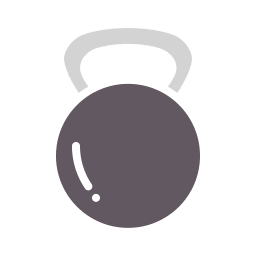
A gym membership, preferably with a professional trainer will definitely be beneficial, except if you already have a home gym.
Gym memberships are getting more affordable nowadays, and there’s no harm to apply for one. Equally, basic sports clothing (such as men’s shoes or women’s golf shoes) is highly recommended.
Should I exercise indoors or outdoors?
As most of the workouts will require easy-to-carry equipment, you can do the exercises both indoors and outdoors. It can even be a bonding activity with your pet if you have one.
Why do I need to cool down after playing golf?
Cooling down is very important after any sport to prevent injuries, which in turn will allow you to play more golf in the end.
The aim of a proper cool-down session, usually with gentle cardio exercises and static stretches, is to relax your strained muscles and gradually decrease your heart rate, as well as your body temperature.
After a golf session, the body temperature and heart rate can be quite high, and the stress of several muscle groups can also be very high due to the explosive motions.
Without a proper cooldown, it can lead to injuries and unwanted diseases.
Cooling down will also help the body in disposing of waste products, such as the horrifying lactic acid, which most of us are familiar with.
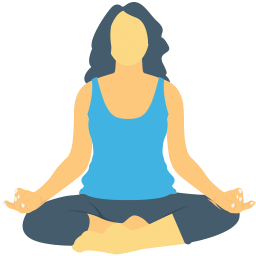
In turn, your body will recover faster, and in turn, you can hit the gym or the golf course sooner.
While cooling down exercises might seem boring or a waste of time, remember that you will actually save more time. You can have more fun on the golf course with better recovery and fewer injuries.
With all the questions being answered (If you still have any, don’t hesitate to ask in the comment section!), let us move on to the core discussion: our Golf Workout Exercises.
Bonus!
Download a free infographic! which summarizes the content of this article in a short and easy-to-read format. It’s perfect if you want to read this later!
CHAPTER 2
Golf Workout Regime
Before we begin, let’s discuss how you can approach this regime.
This workout regime will consist of 9 different workouts that will cover different muscle groups: your arms, back and lower back, legs and thighs, and your core.
There are three ways you can approach these exercises:
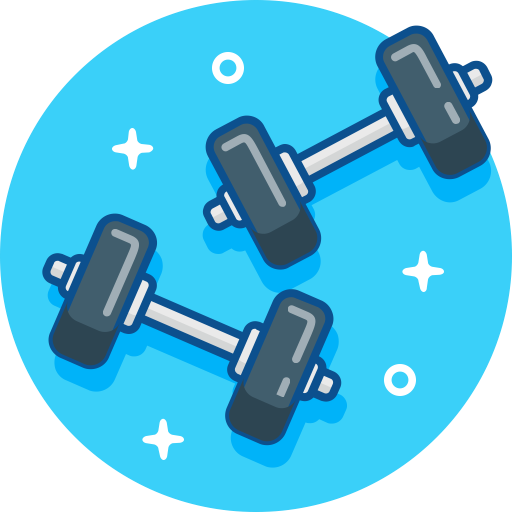
Circuit Training
With circuit training, you do all the 9 exercises back-to-back without rest, where we call each of the exercises as station.
After you are finished with all of the 9 stations, you rest for 30 seconds to 3 minutes, depending on your endurance. Then you repeat all the 9 stations again, rest, and repeat for one last time.
With a circuit training approach, you aim for endurance instead of strength.
For weighted stations, use a comfortable enough weight that you can do 20 repetitions on the first circuit, 15 on your second, and 10 on your third.
- 9 exercises back to back and 30-second rest
Do this regime 3 times per week, with a rest day in between workouts. If you are also looking to improve your stamina in the course, this is the right approach for you.
Strength Training
With the strength training approach, you use a weight heavy enough so that you can only do 8 reps per set, for 3 to 5 sets with each workout.
You rest in between each set, and you move on to the next exercise after you finished all the sets for the previous one.
As the name suggests, here the emphasis is strength building.
I’ll again reinstate the importance of choosing the right weight, heavy enough so that you will need to force yourself, but not too heavy that you will injure yourself.
Do this program three times a week with a rest day in between.
- 3-5 sets per workout and 8reps per set
Those looking to increase their swing speed can use this approach.
Cardio-Weightlifting Combination
There are many ways to approach this one, in fact, you can also combine the two above approaches with cardio training if you’d like.
What I like to do in this approach is to only train one muscle group each day, and do cardio exercises before and after the workout.
Here, you will build both endurance and strength, albeit with a relatively slower approach for both.
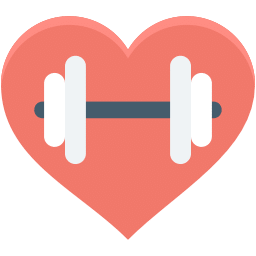
Another benefit is that you can also lose weight while doing this workout, so this approach is good for those looking to shed some fat.
Here, we’ll divide the exercises into workout A, B, and C. Do workout A on day 1, workout B on day 3, and Workout C on day 5, and do cardio before and after the workout.
For weighted training, use weights comfortable enough so you can do 10 reps per set, 3 sets per exercise. Rest in between each set.
Here, you will rest one muscle group longer than the other approaches, which is better for beginners looking to build some muscles.
Which one is the right one for you? We’ll let you be the judge. Doing the basic assessment tests we have mentioned above might help you decide.
Let’s move on to the exercises.
Workout A
Swiss Ball Russian Twist
- Target Muscle: Core and Abs
- Second Muscle: Glutes, Hamstring, Hips, Back
The Swiss ball Russian twist is a good exercise to strengthen your core while also training the flexibility of your hip and spine rotation, which are the keys to a successful golf swing and fitness.
Not only is it very useful for improving your game -and preventing injuries- it is also very easy to do for anyone. You will need a Swiss medicine ball to do this exercise, and here is how you do it:
- Lie back on your medicine ball, raise your hips so that your knees will make a 90-degree angle to the floor
- Cup both of your hands together, and raise it straight above your chest
- Twist your torso to one side, keep your feet on the ground and hips raised, inhale to contract your core and maintain stability
- Pause for 1 to 3 seconds, slowly come back to the starting position while exhaling
- Do steps 3 and 4 to the other side. This is one repetition
The key to this exercise is to maintain posture and balance.
Use your abs and core for movement instead of pushing with your back and hips. If you are looking for an added challenge, you can carry a dumbbell while rotating.
Depending on your approach discussed above, you might do 10 to 20 repetitions per set.
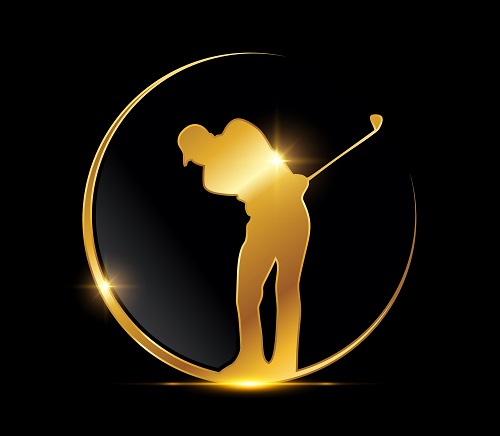
PRO TIP
While using swiss medicine ball is the ideal method, you can also do this at home on the edge of your bed, it’s a good way to start your morning stretches!
Single-Leg Single-Arm Deadlift
- Target Muscle: Hamstrings, Glutes, Upper Legs
- Second Muscle: Arms, Shoulders, Core Muscles
The single-leg, single-arm deadlift is a great exercise that will target almost all the muscles you will need in golf.
It is relatively easy to do, and you can use either a dumbbell or kettlebell to complete this exercise.
It will mainly target your hamstring, which is very prone to injuries, and also very important to support your swing. Make sure that you do enough warm-up to stretch your hamstring before doing this exercise.
Here is how you do it:
- Hold a dumbbell or kettlebell in your left hand, let it hang in front of your thigh
- Shift your weight to the right leg, and lift your left leg a little off the floor. This is the starting position. Stretch your opposite arm straight to the side to maintain balance
- Maintain your lower back at its natural spine angle, lift the left leg to stretch out behind you, toes pointed to the floor
- The kettlebell/dumbbell should travel towards the floor
- Slowly go back to the starting position, repeat for 8 to 20 reps, depending on your approach, and repeat for 3 sets for each side
Use a comfortable weight depending on your approach. If you need more challenge, you can hold two dumbbells or kettlebells in each hand.

PRO TIP
The important thing about this exercise is to maintain posture and not to lean too far forward.
Imagine your core and your leg moving together as one unit. Also, keep your shoulders flat and backward throughout the movement, and keep the dumbbell/kettlebell close to your shin.
Arm Bar with Screwdriver
- Target Muscle: Shoulder Stability
- Second Muscle: Hip Flexors, Abs, Core
This is a great exercise to improve your shoulder mobility, stability, and strength while also strengthening your core and hips at the same time.
To do this exercise, you will need a kettlebell.
As before, use a comfortable weight depending on your approach. This exercise might be a little hard to get the hang of at first.
But as you become more comfortable with the motion, you definitely feel the benefits almost immediately.
Here is how we do it:
- Lay on your right side in a fetal position, hold the kettlebell with your right hand close to your chest, your right elbow closing tight. This is the starting position.
- Roll on your back so that you are facing the ceiling, keep the kettlebell close to your chest
- Lift the kettlebell so that your right arm is extended forward towards the ceiling. You can use both arms to lift the kettlebell before extending the left arm to your side for balance
- Bend your left knee so that it makes a 90-degree angle to the floor
- Keep your right arm extended, rotate clockwise as far as you can, and rotate counter-clockwise as far as you can. This is one repetition
- Do 3 sets for both arms
As mentioned, this exercise might seem complicated at first, but it’s actually not as hard as it seems. Be careful not to use too heavy of a weight, as it might injure your shoulder.
Bring comfortable shoes as well to avoid soreness.
Workout B
Leg Swings
- Target Muscle: Leg and Hip Flexibility
- Second Muscle: Glutes, Hamstring, Hips, Back
This is a fairly simple stretching exercise, yet you shouldn’t underestimate its importance.
Leg swinging is a great exercise to improve the mobility of your hips, legs, and lower back, which is essential to improving your swing speed while preventing injuries.
For this exercise, use a pole to balance your body, or you can also use a weighted golf club or two clubs held together if you are doing this outdoors. Here is how you do it:
- Stand with your right hand holding the pole, and keep your feet shoulder-width apart. This is the starting position
- Swing your left leg forward and backward. Keep your upper body posture straight
- Swing with a moderate pace for ten full swings, and repeat on the other leg
- Do 3 sets for each leg
It is a relatively simple exercise.

PRO TIP
You can also use this exercise to warm up on the golf course, using your golf clubs to replace the pole. It is a great way to prevent leg and hip injuries while increasing flexibility.
Hip Flexors Stretch
- Target Muscle: Hip Flexors
The hip flexor is a muscle area in your lower belly that protects your lower back and lumbar region.
In the explosive movement of your swing, the hip flexor is activated and is actually one of the power sources for your golf swing speed.
So, training your hip flexor is extremely important, not only to prevent lower back injuries but also to improve your performance and distance.
Here is a simple stretching exercise to strengthen your hip flexors:
- Starting Position: Sit on a swiss medicine ball, hold a golf club end-to-end behind your shoulder blades to extend your spine and shoulders.
- Lift one of your legs off the floor as high as you can, hand old for 30 seconds
- Go back to the starting position, and repeat with the other leg
- Do 3 sets for each leg
Now, it might seem very easy to do. However, the hip flexor muscles are rarely trained, so they will be heavier and harder than they seem.

PRO TIP
For an added challenge, you can use ankle weight on both of your legs. Feel the hip flexors contracted throughout the exercise.
Mini Band Walk Forward
- Target Muscle: Glutes
- Second Muscle: Leg Muscles, Hamstrings
Here, you use two mini-bands in the exercise.
It is widely available and very cheap, so you might as well purchase it for other exercises at home.
The glutes are very important muscles during your golf swing, maintaining a stable base for your posture to keep a solid angle throughout the swing.
Besides its obvious benefit in improving your swing speed, you will be surprised how having strong glutes can improve your golf swing accuracy as you hit the center more and more often.
Here is how to do the mini band stretching exercise:
- Starting Position: Place one mini-band above your knees and the second one around your ankles. Stand with your feet a shoulder-width apart
- Walk forward, slowly at first, and keep the steps small and steady. The important thing is to maintain a straight back posture and alternate elbow movements.
- Keep your knees bent and over your toes during the walk. Do 10 steps, and repeat for 3 sets
The key is to maintain correct posture throughout the walk and do small and steady steps while maintaining a steady breathing sequence.
Feel your glutes contracting throughout the exercise. Increase the number of steps as you become more comfortable with the exercise.
Workout C
Hip Crossovers
- Target Muscle: Hips
- Second Muscle: Lower Back
We have discussed several times in this article how your hip muscles are really important for your golf swing while also being the area to catch the most injuries.
The hip crossover exercise will twist your whole lower body, strengthening the muscles and tendons while increasing rotational flexibility.
As a result of this exercise, you will produce more torque during your backswing and improve your follow-through.
Here is how you do it:
- Starting Position: Lie on the ground (you can use a yoga mat or similar materials), face up, and your arms stretched to the side. Bent your knees with feet positioned wider than shoulder-width.
- Keep your heels flat on the ground, and rotate your hips so that your bent knees will touch the floor on the right side. Hold for one to three full seconds.
- Slowly return to the starting position and rotate to the other side.
- Repeat for six repetitions in each direction, do one to three sets
As you get more comfortable with the exercise, you can increase the number of repetitions.
For an added challenge, you can put a mini-band around your ankles or knees (or both). The key is to maintain form and keep your heels, hips, back, and arms flat on the ground while you rotate.
Feel the whole muscles stretched during the movement.

PRO TIP
Maintain your breathing during the exercise, inhale while you make the rotation, and exhale while you return to the starting position.
Lower Trunk Rotation
- Target Muscle: Lower Back, Obliques
- Second Muscle: Shoulder Muscles
Lower trunk rotation is a great stretching exercise that strengthens the obliques, lower back, and hips and increases the flexibility of the scapula (shoulder blades) muscles.
It may look easy to do, but it is actually harder than it seems. Strengthening your lower back and obliques is extremely important if you are looking to improve your golf swing speed.
It also provides you with the balance and endurance you will need to prevent injuries.
Here is how to do the stretch:
- Starting Position: Lay on your back, face up, arms stretched to your sides with hands facing towards the ceiling. Bend the knees with your heel flat down the floor, feet together. This is the starting position.
- Rotate your lower body so that your knee will touch the floor to your right, also rotate your right arm to touch the floor. Inhale and maintain posture.
- Slowly return back to the starting position while exhaling.
- Repeat to the other side. For the start, do 12 repetitions for each side and 3 sets.
It might seem similar to the hip crossover exercise, but the foot position and hand rotation will target different muscle groups.
For increased resistance, you can use a mini band around your knees.
The important part of this exercise is to maintain the posture, with your heels, hips, back, and arms touching the floor at all times.
Inverted Hamstring Stretch
- Target Muscle: Hamstring
- Second Muscle: Lower Back, Hips, Core Glutes
Another hamstring exercise, which is actually never enough.
A flexible and strong hamstring will allow your core muscles to activate and rotate properly.
Which in turn, will speed up your golf swing while maintaining accuracy. It is also great to avoid the dreaded lower back pain and injuries.
This is a relatively easy exercise to do, but you have to maintain balance and posture.
Here is how you do it:
- Starting Position: Start with your left leg, stand only on your left leg, and extend your arms to your side.
- Bend over at your waist while stretching the right leg behind. Maintain a straight back so that your body will make a 90-degree angle to the floor and your left knee.
- Slowly return to the starting position, maintain your posture
- Switch to the other leg
For a start, do six repetitions for each leg, and do one to three full sets. It is actually harder than it looks like to maintain proper balance and posture throughout this exercise.
As you become more comfortable, you can increase the number of repetitions.
Frequently Asked Questions
What is the best workout routine for golf?
A golf-specific workout routine should include strength training, flexibility exercises, and core stabilization.
Focus on rotational movements, balance drills, and improving mobility in the hips, shoulders, and thoracic spine.
Incorporating cardio and functional movements can also enhance endurance and power for optimal performance on the course.
What exercise improves golf swing?
Rotational exercises like medicine ball twists, cable woodchoppers, and resistance band rotations improve the golf swing.
These movements strengthen core muscles, enhance rotational power, and improve stability.
Adding hip mobility drills, such as lateral lunges or glute bridges, ensures a more fluid and powerful swing.
Should golfers lift weights?
Yes, golfers benefit from lifting weights as it builds strength, stability, and power. Focus on functional movements, lighter weights, and higher reps to avoid stiffness.
Exercises like deadlifts, squats, and kettlebell swings can enhance explosive power while maintaining flexibility for improved golf performance.
What is Rory McIlroy’s workout?
Rory McIlroy’s workout focuses on functional strength, flexibility, and cardio. It includes exercises like deadlifts, squats, and rotational drills for power.
He emphasizes core stability, mobility, and endurance training to maintain fitness and explosive performance on the golf course. His routine balances strength and flexibility.
